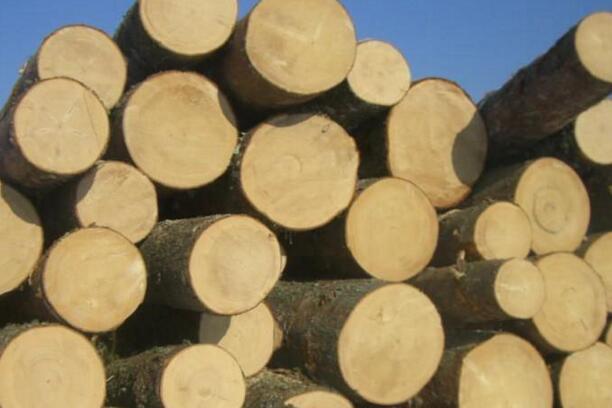A large inventory of the year to come: Which is the highest profit for wood?
China board trading network news: Last year, the timber boomed and all kinds of remarks were heard. The wood industry and the panel industry have created a panic atmosphere. However, according to the 2016 wood profit and port arrival situation, the timber market in 2016 is still considerable. Wood profit rankings 2016 main timber species income status list: Plate casket TOP1, SPF, 2*4, 2*6 and other specifications, from April to June the highest profit of about 500 yuan / m3; Plate casket TOP2, Scots pine plate casket, profit 50-100 yuan / cubic meter, and the price has been rising. Log TOP1, Ausong, profit space continued at 80-120 yuan / cubic meter; Logs TOP2, Baisong, Larch, profit of 80-100 yuan / cubic meter, in September 2016 reached the peak of 150 yuan / cubic meter; Log TOP3, radiata pine logs, the average profit is 60 yuan / cubic meter; Log TOP4, Douglas fir logs, the average profit is about 50 yuan / cubic meter; Logs TOP5, Hemlock logs, the average annual profit is 30-50 yuan / cubic meter. Wood port arrival Although the timber market experienced many unfavorable conditions such as rising transportation costs and changes in the exchange rate of the RMB in 2016, it can be seen that the timber shipment arrival figures for the year indicated that the timber import volume was still relatively stable in 2016, and the timber market situation did not deteriorate too much. . The following is the data for the shipment of some important timber ports in 2016: At the Manzhouli port, the average daily arrival of 350 vehicles, the average daily arrival of 30,000 cubic meters, the annual volume reached 11.5 million cubic meters; Suifenhe port, the average daily arrival of 160 vehicles, the average daily arrival of 12,000 cubic meters, the annual volume reached 4.5 million cubic meters; Erenhot Port, with an average daily arrival of 45 vehicles, has an average daily arrival of 4,000 cubic meters, with an annual volume of 1.65 million cubic meters. From the above, we can see that last year, the timber market situation was fair and the import volume was relatively stable, laying a good foundation for the development of the timber industry and the sheet metal industry this year. The above information, relevant Baoyuan plate supply information, plate purchase, etc. Please pay attention to the Chinese plate trading network
Trace elements include nutrients such as boron, zinc, molybdenum, iron, manganese and copper. Although plants require very little trace elements, their effects on plant growth and development are as important as large amounts of elements. When a trace element is lacking, crop growth and development are significantly affected, yield is reduced, and quality is degraded. On the other hand, too much trace elements can poison crops, affecting yield and quality, and even endangering human and animal health in severe cases. With the continuous increase of crop yield and the large-scale application of chemical fertilizers, the application of trace element fertilizers has become increasingly urgent. Among the trace element fertilizers, iron, manganese, zinc, Copper Sulfate, boric acid, molybdic acid and monovalent salts thereof are usually used.
Chemical fertilizers are usually divided into two types: macro element fertilizers and trace element fertilizers. What are the constant elements of Fertilizer? The macro element fertilizer is a fertilizer that consumes a large amount of crops, such as nitrogen fertilizer, Phosphate Fertilizer, potassium fertilizer, calcium fertilizer, magnesium fertilizer, and sulfur fertilizer.
Trace element fertilizer, often referred to as micro-fertilizer. It refers to fertilizers that contain micronutrients, and the crops consume less (relative to the constant element fertilizer). Although crops require very little trace elements, they are as important to crops as macromolecules and cannot be replaced. The application of micro-fertilizer should exert its fertilizer efficiency on the basis of nitrogen, phosphorus and potassium fertilizer. At the same time, under different nitrogen, phosphorus and potassium levels, the response of crops to trace elements is also different.
Micro-fertilizer is a chemical product that has been used as a fertilizer in agriculture after a large number of scientific experiments and studies have been confirmed to have certain biological significance, which are indispensable for the normal growth and development of plants.
There are two methods for applying trace element fertilizers: soil application and foliar application. Since the application amount per unit area is small, it must be diluted with a large amount of inert material before application, and uneven application may poison some crops. Trace element fertilizers are often mixed into a constant fertilizer for application.
1. The crop requires a small amount of trace elements, and the range from moderate to excessive is very narrow, so it is necessary to prevent excessive use of micro-fertilizer. The soil must be applied evenly when applied, and the concentration should be ensured. Otherwise, it will cause plant poisoning, pollute the soil and the environment, and even enter the food chain, which will hinder the health of humans and animals.
2, the lack of trace elements, often not because of the low content of trace elements in the soil, but its low effectiveness, by adjusting soil conditions, such as soil pH, redox, soil texture, organic matter content, soil water content, etc., can be effective Improve soil micronutrient nutrient conditions.
3. Trace elements and nutrients such as nitrogen, phosphorus and potassium are equally important and irreplaceable. Only when the requirements of plants for a large number of elements are met, the application of trace element fertilizers can fully exert the fertilizer effect, in order to show significant increase in yield. effect.
Jinan Huijinchuan Chemical Industry Co., Ltd. , https://www.hjcchemical.com The
The